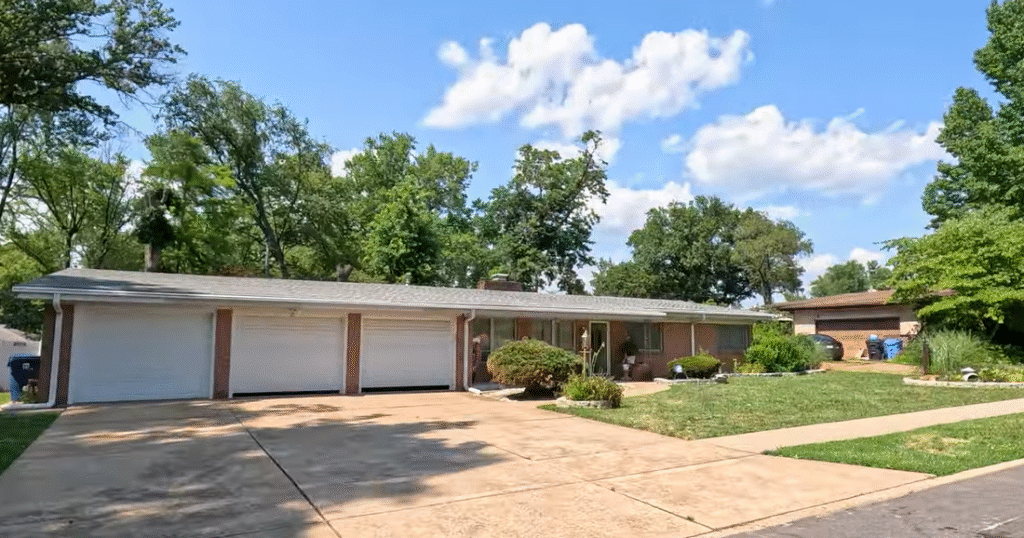In Chesterfield, a cost-of-living report’s figures only tell half the story. Although the cost of living in this Missouri suburb is significantly higher than the state and national averages, locals frequently cite the trade-off as being especially advantageous. This region’s median home price of $448,800 is significantly higher than the $338,100 national average. This is due to both demand and a dedication to upholding property standards, which have kept values remarkably steady over the years.
Many families view the housing premium as an investment in a lifestyle that is supported by top-notch schools, well-kept neighborhoods, and easy access to lucrative employment markets. Chesterfield residents can afford this high cost structure because their median household income is $143,299 per year. This income level, which is almost twice the national median, enables households to maintain a comfortable standard of living, save for the future, and support local businesses in addition to managing mortgage payments.
The cost of housing dominates the discussion, but daily costs in the city paint a more balanced picture. Grocery prices are marginally lower, utilities are roughly 3% less than the national average, and transportation expenses are drastically lowered—by roughly 13%. These savings lessen the impact of rising housing costs over time, enabling residents to more easily budget for necessities as well as leisure. Chesterfield’s daily routines are surprisingly affordable for a family that might otherwise feel financially strained in another expensive suburb.
Chesterfield, Missouri Key Cost of Living Facts
| Category | Chesterfield Figure | National Average | Missouri Average | Source |
|---|---|---|---|---|
| Median Home Price | $448,800 | $338,100 | $212,300 | BestPlaces |
| Median Rent (2BR) | $1,280 | $1,430 | $950 | BestPlaces |
| Cost of Living Index | 120 | 100 | 85.6 | BestPlaces |
| Housing Cost Difference | 32.7% higher | – | 111.4% higher | BestPlaces |
| Utilities | 3% lower | – | Similar | Apartments.com |
| Groceries | 3% lower | – | Slightly lower | PayScale |
| Transportation | 13% lower | – | Slightly lower | PayScale |
| Healthcare | 1% lower | – | Slightly lower | PayScale |
| Recommended Annual Income (Family) | $86,040 | – | – | BestPlaces |
| Recommended Annual Income (Single) | $40,800 | – | – | BestPlaces |
| Population | 48,593 | – | – | Niche |
| Median Household Income | $143,299 | $74,755 | $65,600 | U.S. Census |
| Reference Link | Niche.com Report | – | – | Niche |

The city’s status as an upper-middle class community is further supported by the suggested income threshold to live comfortably, which is $40,800 for a single person and $86.040 for a family. Although this threshold is high in comparison to most of Missouri, the quality of the public services, infrastructure, and amenities shows the return on investment. In comparison to many urban areas, community safety has significantly improved, parks are maintained in immaculate condition, and schools in the Rockwood and Parkway districts routinely receive top rankings.
Chesterfield’s location is frequently cited by locals as a very practical benefit. One can travel to downtown St. Louis for work, cultural events, or sports in a little more than twenty minutes, and then return home to wide-open yards and peaceful streets. While many suburbs claim to offer this harmony between peace and proximity, few actually do so consistently. Chesterfield provides an extremely efficient and profoundly fulfilling daily life by lowering the stress and expenses associated with commuting.
An additional layer of stability is provided by the city’s business environment. Jobs that fit the high income profile of the area are offered by major employers like Bayer, Pfizer, and Centene. In addition to supporting household incomes, this economic foundation also fosters a flourishing local service sector that directly benefits locals, such as independent eateries and boutique fitness centers.
Chesterfield’s cost of living index of 120 puts it in line with other wealthy Midwest suburbs, but what sets it apart is its makeup. The region’s especially creative approach to community planning offsets the higher housing costs. Chesterfield has fought against overdevelopment over the years, making sure that infrastructure keeps up with population changes and growth is measured. This strategy has maintained neighborhood cohesion and remarkably stable property values.
This economic structure has a noticeable social impact on daily life in the community. A sense of community is fostered by weekend farmers’ markets, Chesterfield Amphitheater’s seasonal events, and well-funded youth sports leagues. In addition to paying for a home, residents are also investing in a shared experience that encompasses their children’s education, personal leisure activities, and the community’s long-term well-being.
Perceived value is often the deciding factor for newcomers considering the higher cost. That value is provided every day in Chesterfield in the form of reduced crime, cleaner public areas, easier access to a wide variety of cultural and recreational opportunities, and shorter commutes. Chesterfield continues to be very effective at turning resident investment into observable improvements in quality of life when compared to other suburbs with comparable amenities.
The city’s future challenge will be to keep this equilibrium as demand keeps rising. Chesterfield runs the risk of reducing its demographic appeal and losing some of the diversity that contributes to the fabric of the community if prices rise too quickly. However, its history indicates that it has the potential to grow steadily and sustainably, preserving the area’s value and character.

